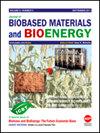Remote Sensing-Based Assessment of Soil and Water Pollution in Deep Excavation Scenario
IF 0.5
4区 医学
引用次数: 0
Abstract
Soil and water resource mismanagement can negatively intensify global poverty and jeopardize ecology. Soil can be contaminated by heavy metals, organic chemicals like biological pathogens, pesticides, micro plastics and nano particles. Contamination decreases the soil’s capability to yield food thereby affecting food production by means of pollution and disease. Moreover, soil contaminants move into rivers damaging the water quality. Numerous technologies have been established to tackle water and soil remediation, such as deep excavation technique where transportation of contaminated soils or water is done to remote unpopulated sites. Recent development in Remote Sensing and geographic information processing techniques have led to exciting new opportunities for investigating and closely monitoring environmental factors that influence key land and soil management approaches. Hence, this paper uses the Deep Excavation and Remote Sensing based Assessment Model (DERSAM) to assess the soil and water pollution in contaminated areas. The data are taken from the Europe soil contamination map to classify the contaminated and non-contaminated areas. This data obtained from the high-resolution satellite of Remote Sensing (RS) technique and Geographical Information System (GIS) with the parallel expansion of a fully assimilated geospatial database system that provides monitoring and feedback at suitable spatial scales. Thus, such data can be utilized for long-term environmental management and monitoring of remediation and rehabilitation of excavation areas. The numerical outcomes show that the recommended DERSAM model increases the land use and land cover change prediction by 90.2%, the classification ratio by 98.2%, the pollution reduction ratio by 96.6%, the soil contamination detection ratio by 95.9%, and the overall performance by 97.2% compared to other existing approaches.基于遥感的深基坑土壤和水体污染评价
水土资源管理不善会加剧全球贫困并危害生态。土壤可能受到重金属、生物病原体等有机化学物质、农药、微塑料和纳米颗粒的污染。污染降低了土壤生产粮食的能力,从而通过污染和疾病影响粮食生产。此外,土壤污染物进入河流破坏水质。已经建立了许多技术来解决水和土壤修复问题,例如将受污染的土壤或水运输到偏远无人居住的地方的深开挖技术。遥感和地理信息处理技术的最新发展为调查和密切监测影响关键土地和土壤管理方法的环境因素带来了令人兴奋的新机会。因此,本文采用基于深度开挖和遥感的评价模型(DERSAM)对污染区域的土壤和水污染进行评价。数据取自欧洲土壤污染图,用于对污染区域和非污染区域进行分类。这些数据来自遥感技术的高分辨率卫星和地理信息系统,并同时扩展了一个完全同化的地理空间数据库系统,在适当的空间尺度上提供监测和反馈。因此,这些数据可用于长期的环境管理和监测开挖区域的修复和恢复。数值结果表明,与其他方法相比,推荐的DERSAM模型的土地利用和土地覆盖变化预测提高90.2%,分类率提高98.2%,污染减少率提高96.6%,土壤污染检测率提高95.9%,总体性能提高97.2%。
本文章由计算机程序翻译,如有差异,请以英文原文为准。
求助全文
约1分钟内获得全文
求助全文

 求助内容:
求助内容: 应助结果提醒方式:
应助结果提醒方式:


